As an artist who uses both traditional and digital media, I often think about the benefits and challenges of merging the two. Whether you're a seasoned artist or just starting out, understanding how they can work together can open up new possibilities and enhance your artistic practices. In this post, I am going to dive into a couple of the advantages and one major disadvantage, along with how to tackle it.
Advantage 1: Expanded Creative Horizons
One of the best things about blending traditional and digital art is the variety of creative options it opens up. Each medium has its own strengths, and combining them can lead to some truly unique pieces.
Traditional Art's Tangibility and Texture: There’s something that I find special about the tactile experience of traditional art. The way watercolor spreads on paper or the texture of acrylic on canvas adds a depth and richness that's hard to replicate digitally. The physical act of painting, mixing colors, and layering textures can be incredibly satisfying and grounding. I find it to be cathartic and the process is very relaxing for me.

Digital Art's Versatility and Flexibility: On the flip side, digital art offers unmatched versatility. With tools like Procreate and Photoshop, it's like having a safety net. You can experiment endlessly without worrying about wasting materials. You can always undo mistakes, try out different color schemes, and manipulate layers to achieve the perfect outcome.

The Perfect Blend: I've found that integrating both media, and utilizing the best of both worlds is an incredible way to work. I love combining the richness of traditional textures along with the versatility that can be achieved with digital tools. For example photographing a pencil drawing and coloring it in Procreate, or even painting the first few layers of a drawing with watercolor, and adding final touches or color variations digitally, opens up so many wonderful options. I've gone to great lengths in developing my digital tools to match the richness and texture that I look for in traditional media so that the process feels more seamless.
Advantage 2: Creating a Better Workflow
Integrating digital media into your traditional art practice can also streamline your workflow, making the creative process more efficient and allowing you to focus more on your ideas and concepts rather than struggling with logistics.

Digitally Planning Traditional Pieces: Before committing to a traditional piece I'll often use digital tools to sketch and plan compositions. This helps in visualizing the final piece and creates a game plan for the painting.
Hybrid Techniques for Refinements: After completing a traditional artwork, it's easy to make corrections or variations. I'll often photograph the piece (even with my phone) and make those changes digitally. This hybrid technique is especially easy when your digital tools match traditional media so closely.
Disadvantage: The Learning Curve
I think overall, the biggest disadvantage of combining digital and traditional art is the learning curve associated with digital tools. But luckily that's easy to overcome!
Learning Digital Tools: For traditional artists, transitioning to digital platforms like Procreate and Photoshop can seem daunting and a little overwhelming. But it doesn't have to be if you approach it in a fun and relaxed way. I created a course called The Procreate Watercolor Masterclass which walks you through step-by-step on creating digital watercolor using traditional techniques.
Maintaining Consistency Across Media: Maintaining a consistent look and style across both traditional and digital works can seem challenging. But it's really not if your digital tools are sampled and created by the same materials that you're working with traditionally. If it's watercolor wouldn't it make sense to use digital brushes crafted from real watercolor samples, or real canvases and textures if it's oil or acrylic? That's why I created the Ultimate Brush Toolbox, Ultimate Art Effects and Ultimate Canvas Creator to make working with digital media look and feel more like traditional media.
Conclusion
Obviously the advantages of combining digital and traditional media far outweigh any disadvantages. Especially when you consider the possibilities of how both can push the boundaries of your creativity. I'd love to hear how you've experimented with both media. Leave a comment below and let me know your thoughts and ideas!


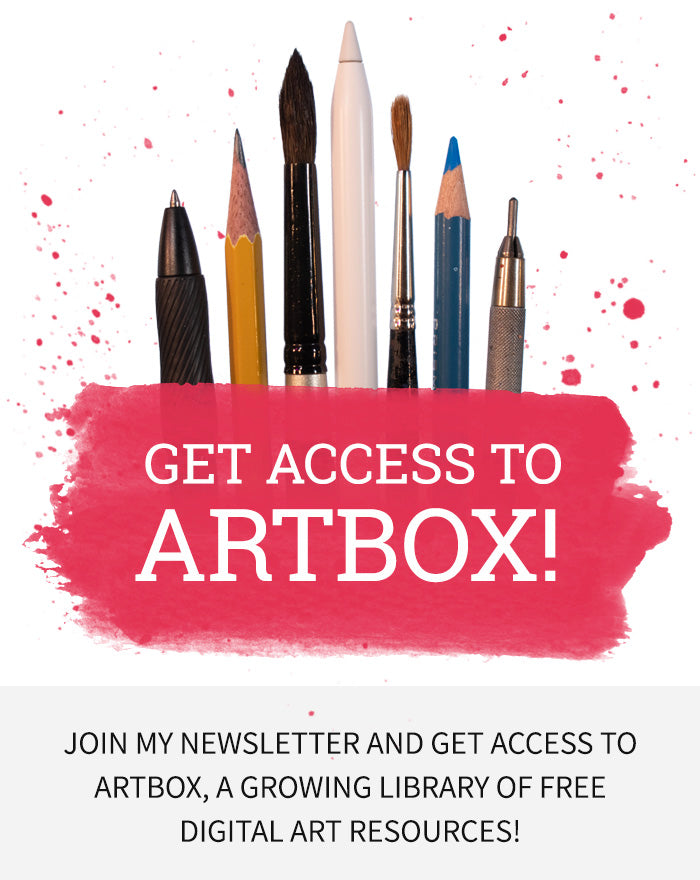

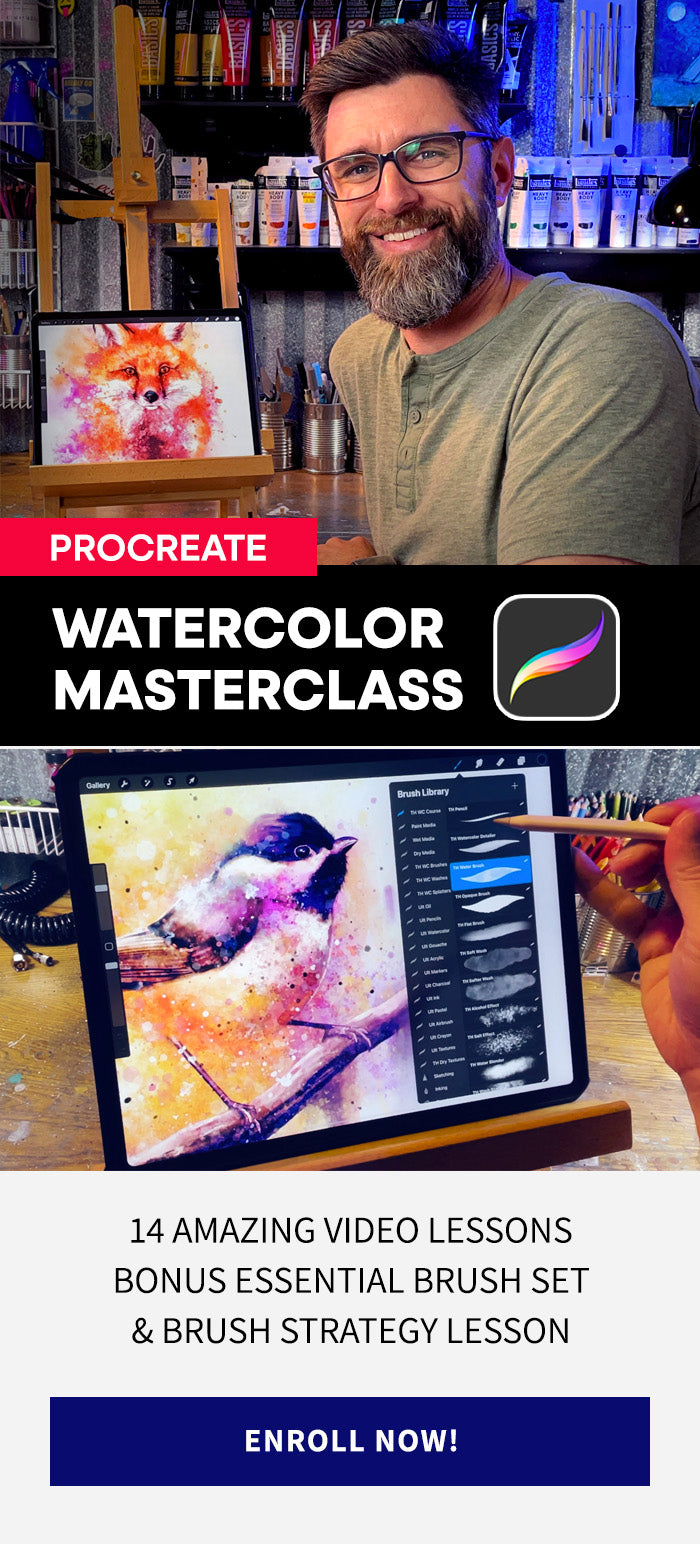

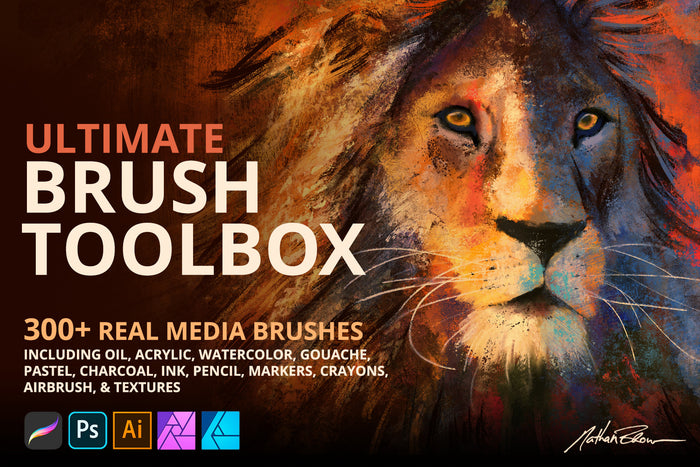
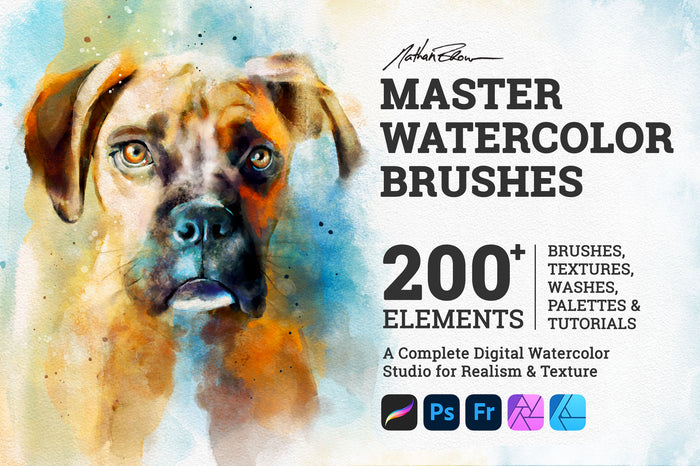
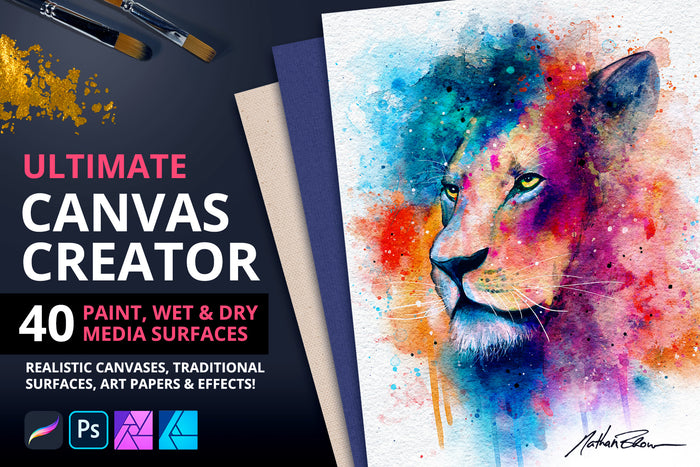
2 comments
I am intrigued by the possibilities of digital art. I’ve played around some in Photoshop but do not have a pen tablet that permits me to draw or paint as I would in traditional art. But the iPad together with an Apple pencil is much like working with pencils, pens, and brushes. I’m finally spending enough time learning Procreate to remember how to do many things without having to review. I purchased some of your courses and digital brush sets at Design Cuts but realized I was unable to follow you in Procreate until I learned more about the program itself. I think I know enough now to really take advantage of working through your wonderful courses. I’ve recommended you to many of my friends and family – and even to my traditional watercolor teacher.
———
Nathan Brown Art replied:
Wow Jane! Thanks so much for the kind words and support. I really appreciate it. So very glad to hear that you’ve stuck with Procreate. It really is an incredible app, especially when you are coming from a traditional painting background. Please do let me know what you think of the courses once you finish working through them, and reach out if you have any questions. :-)
So as a person who started her journey with digital art and then am moving to explore traditional I find transitional art every overwhelming versus digital art very relaxing. Real watercolors or acrylics have all these rules that unless you haven’t gone to art college you may not know. I’m heavily reliant on my artist friends to give me tips and tricks along the way — unlike digital art which is dependent on play (because in the long run it can be cheaper and you don’t have to keep buying canvases paints and all) — I find digital art relaxing and traditional art which feels like a hike that I cannot reach the destination. There will always been areas that need improvment. As a self taught artist I am so much more comfortable with YouTube videos, your videos, Lisa’s videos, Skillshare Domestika courses that guide you. Traditional art does have such a support system as digital art does. But that’s just my two bits. Nice article. Love your courses.